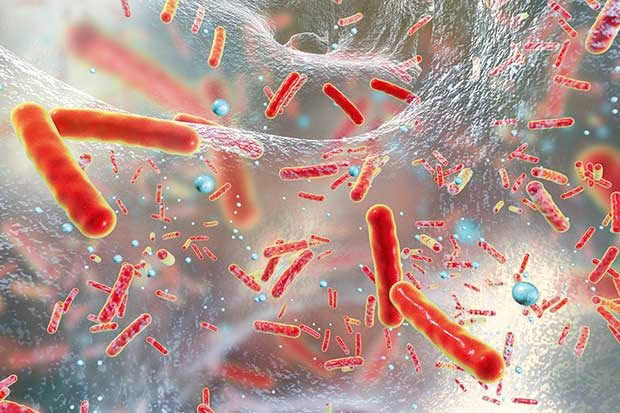Antibiotic resistance 101: How the misuse of antibiotics could threaten future generations

Antibiotics were once touted as miracle cures. But their ongoing misuse may mean that even the most common operations won’t be available to future generations.
Words: Rosemarie White
“The time may come when penicillin can be bought by anyone in the shops. Then there is the danger that the ignorant man may easily under-dose himself and by exposing his microbes to non-lethal quantities of the drug, make them resistant,” warned Alexander Fleming, when accepting the Nobel Prize for medicine in 1945.
As predicted 75 years ago by the man who discovered the first antibiotic, microbial resistance is now a significant problem.
“The world is heading towards a post-antibiotic era in which common infections will once again kill,” warns the director-general of the World Health Organization, Dr Margaret Chan.

“If current trends continue, sophisticated interventions, like organ transplantation, joint replacements, cancer chemotherapy, and care of pre-term infants, will become more difficult or even too dangerous to undertake. This may even bring the end of modern medicine as we know it.”
Dr Charles Penn, coordinator of antimicrobial resistance at WHO, also believes the incorrect use of antibiotics is to blame. “One of many reasons antibiotic use is so high is that there is a poor understanding of the differences between bacteria, viruses and other pathogens, and of the proper use and value of antibiotics,” he says.
Antibiotic resistance happens when germs like bacteria and fungi develop the ability to defeat the drugs designed to kill them. The germs are not killed and continue to grow.
Infections caused by antibiotic-resistant germs are difficult — often impossible — to treat. Antibiotic-resistant infections require extended hospital stays, additional follow-up visits and costly alternatives.

Antibiotic resistance does not mean the body is becoming resistant to antibiotics but that the bacteria have become resistant to the antibiotics designed to kill them. “Antibiotics are very often prescribed for no useful purpose. Too many antibiotics are prescribed for viral infections such as colds, flu and diarrhoea. Unfortunately, these public misconceptions are often perpetuated by media and others.
For example, through the use of generic terms such as ‘germs’ and ‘bugs’.”
He notes that dependence on antibiotics for modern medical benefits has contributed to drug resistance. “Similarly, we take it for granted that many infections are treatable with antibiotics, such as tonsillitis, gonorrhoea and bacterial pneumonia. But some of these are now becoming untreatable.”
WHAT IS RESISTANCE?
Here’s how resistance develops: just like people, bacteria have DNA. And just like in humans, that DNA can mutate or change. When inputs from the outside world interact with those mutations, survival of the fittest means only the most robust variations live on. If a bacterium carries several resistance genes, it is called multiresistant or, informally, a superbug.
Bacteria, it turns out, don’t care about political borders or immigration policies. Researchers have even found drug-resistant bacteria on the rear ends of seagulls in Lithuania and Argentina.
In the past, a Staphylococcus aureus infection was common and easily treated with penicillin. But today, it is probable that a staph infection is actually MRSA — a superbug version resistant to antibiotics. Only 10 per cent of current staph infections aren’t MRSA. In fact, studies show that two in 100 people carry the MRSA bacteria. Penicillin is useless against it.

There is no good news on the way, either. Antibiotic development is no longer considered by the pharmaceutical industry to be economically wise. Antibiotics are used for relatively short times, so they aren’t as profitable as drugs that treat chronic conditions, such as diabetes, psychiatric disorders or asthma.
Microbiologists and infectious-disease specialists also urge restraint regarding antibiotic use. Once a new antibiotic is marketed, doctors often hold this new agent in reserve for only the worst cases for fear of promoting resistance, and they continue to prescribe older drugs.
New antibiotics are often treated as the “last-line” in combating pathogens, so the cost of developing one (estimated to be about $73 million) is not being recouped.
The excessive and incorrect use of antibiotics in food-producing animals has also been a key player in drug resistance since resistant bacteria can be transmitted to humans through food.
Most antibiotics — in the United States more than 70 per cent — used to treat or prevent infection in animals are similar to those used in humans.
HOW TO HELP KEEP ANTIBIOTICS WORKING
1. Only use antibiotics when prescribed by a certified health professional. It is important to use them the right way, at the right dose, at the right time and for the right duration. Finish the course.
2. Never demand antibiotics if a health worker says they aren’t required. A viral infection won’t respond to antibiotics.
3. Never share or use leftover antibiotics.
Minimize the need for antibiotics by:
Regularly washing hands, avoiding close contact with sick people and practising safe sex.
Preparing food hygienically — follow the WHO five keys to safer food and choose foods that have been produced without the use of antibiotics for growth promotion or disease prevention in animals.
Keep up to date with vaccinations — they can stop people spreading infections that may need treatment with antibiotics. Unless there is some compelling medical reason for not doing so, you should be vaccinated against hepatitis A, hepatitis B, meningitis, polio, measles, mumps and rubella (MMR), Tdap (tetanus, diphtheria and pertussis), chickenpox, shingles, pneumonia and influenza.
Love this story? Subscribe now!
 This article first appeared in NZ Life & Leisure Magazine.
This article first appeared in NZ Life & Leisure Magazine.
